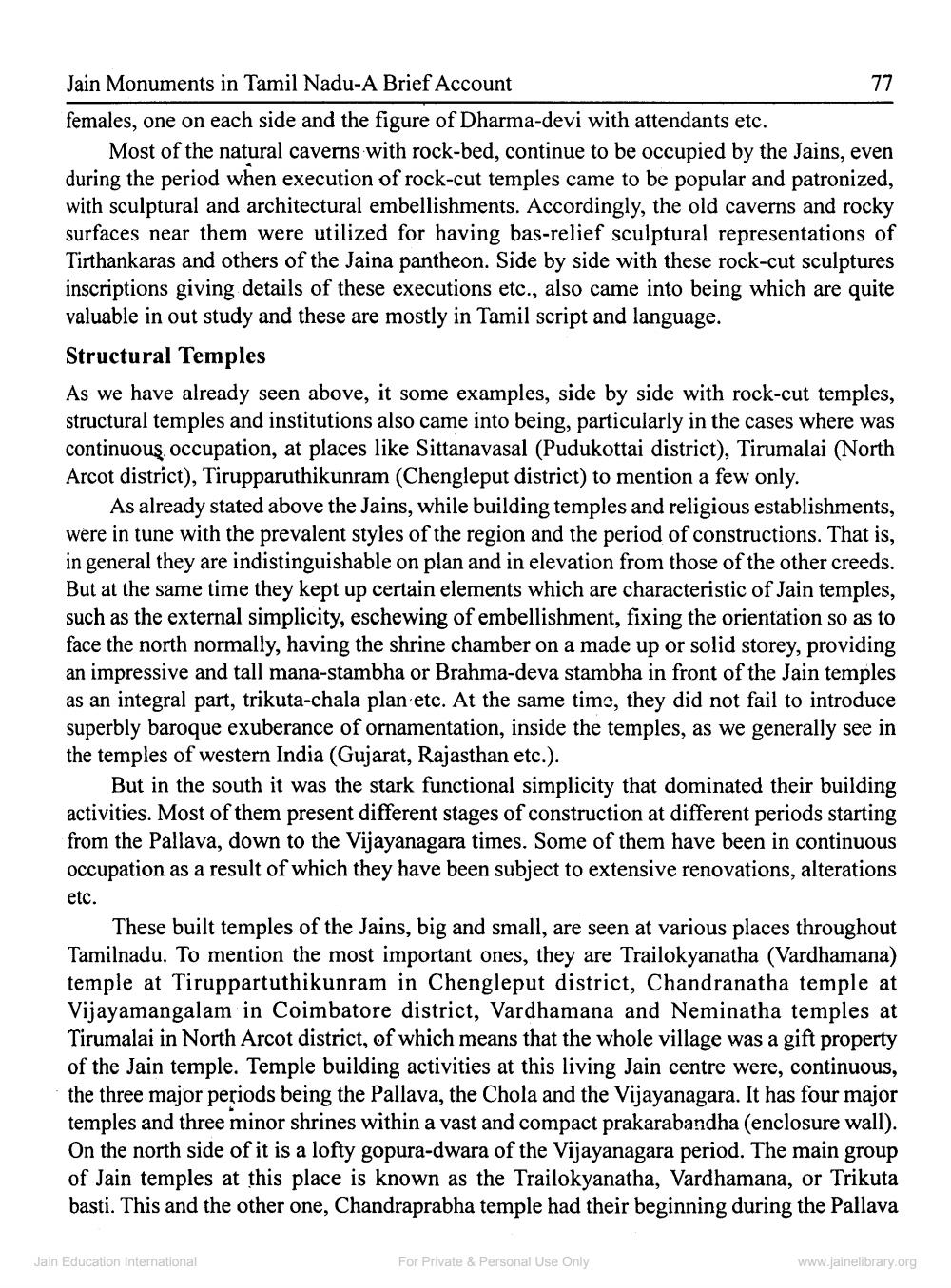________________
Jain Monuments in Tamil Nadu-A Brief Account
females, one on each side and the figure of Dharma-devi with attendants etc.
Most of the natural caverns with rock-bed, continue to be occupied by the Jains, even during the period when execution of rock-cut temples came to be popular and patronized, with sculptural and architectural embellishments. Accordingly, the old caverns and rocky surfaces near them were utilized for having bas-relief sculptural representations of Tirthankaras and others of the Jaina pantheon. Side by side with these rock-cut sculptures inscriptions giving details of these executions etc., also came into being which are quite valuable in out study and these are mostly in Tamil script and language. Structural Temples As we have already seen above, it some examples, side by side with rock-cut temples, structural temples and institutions also came into being, particularly in the cases where was continuouş, occupation, at places like Sittanavasal (Pudukottai district), Tirumalai (North Arcot district), Tirupparuthikunram (Chengleput district) to mention a few only.
As already stated above the Jains, while building temples and religious establishments, were in tune with the prevalent styles of the region and the period of constructions. That is, in general they are indistinguishable on plan and in elevation from those of the other creeds. But at the same time they kept up certain elements which are characteristic of Jain temples, such as the external simplicity, eschewing of embellishment, fixing the orientation so as to face the north normally, having the shrine chamber on a made up or solid storey, providing an impressive and tall mana-stambha or Brahma-deva stambha in front of the Jain temples as an integral part, trikuta-chala plan etc. At the same time, they did not fail to introduce superbly baroque exuberance of ornamentation, inside the temples, as we generally see in the temples of western India (Gujarat, Rajasthan etc.).
But in the south it was the stark functional simplicity that dominated their building activities. Most of them present different stages of construction at different periods starting from the Pallava, down to the Vijayanagara times. Some of them have been in continuous occupation as a result of which they have been subject to extensive renovations, alterations
etc.
These built temples of the Jains, big and small, are seen at various places throughout Tamilnadu. To mention the most important ones, they are Trailokyanatha (Vardhamana) temple at Tiruppartuthikunram in Chengleput district, Chandranatha temple at Vijayamangalam in Coimbatore district, Vardhamana and Neminatha temples at Tirumalai in North Arcot district, of which means that the whole village was a gift property of the Jain temple. Temple building activities at this living Jain centre were, continuous, the three major periods being the Pallava, the Chola and the Vijayanagara. It has four major temples and three minor shrines within a vast and compact prakarabandha (enclosure wall). On the north side of it is a lofty gopura-dwara of the Vijayanagara period. The main group of Jain temples at this place is known as the Trailokyanatha, Vardhamana, or Trikuta basti. This and the other one, Chandraprabha temple had their beginning during the Pallava
Jain Education International
For Private & Personal Use Only
www.jainelibrary.org




